 |
|
|
|
|
||||||||||
|
|
|
||||||||||
|
Technical
Tips from Mark W. Persons |
|
|
This is a commercially installed building air filter. The gap on the edge is about 3/4-inch. What good does that do? The problem was an electrical conduit leading to a shutter control motor that took up 3/4 of an inch. The commercial contractor did not take this into account and installed the filter frame leaving the client to fend for himself. Even mice could get in. Bad news! |
|
|
Here
is an excellent way to install an incoming air
filter in a transmitter building. In this case, the wall opening is the size of a
standard concrete construction block (8" x 8" x 16"). The air filter is
larger by a few inches all around to make sure there are no gaps to allow
mosquitoes and other bugs in. In this case, the filter was 16" x 20" x 1".
The filters are only 3/4" thick in spite of the 1" declared size. On top of that is a 3/4-inch plywood piece
that holds the air filter to the wall. This is one of four vents in a
building that has a 7 KW FM transmitter.
Pleated air filters that do a much better job of filtering out small air contaminants while offering a large surface area to the incoming air. |
|
|
This is what the 3/4-inch
plywood pieces looked like in the shop before installation at the
customer's transmitter site. Note that 1/4-inch hardware cloth is
used to keep mice and other unwanted critters out of the building.
|
|
|
This is the unique
hardware used. The bottom end of the screw is threaded to go into
wood and the top end is 1/4-20 threaded so the wing nut can be put on to
hold the inside of the frame and the air filter in place.
|
|
|
An acorn nut is put on top of the
1/4-20 screw to make it easy to drive the screw in with a power tool.
The acorn nut is removed after the screw is in place.
|
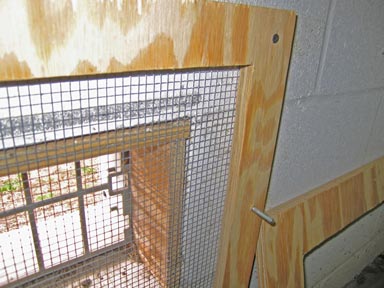 |
Here is the frame on a concrete wall. Note the screen to keep mice out and metal bars to keep burglars out. |
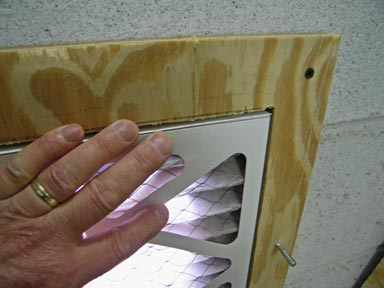 |
Here is the filter being held in place by hand before the removable plywood piece, with smaller opening, is installed. |
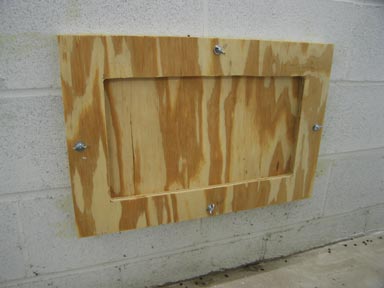 |
In Minnesota, we typically block half
of the incoming vents during the
winter months to restrict the amount of cold air that gets into the
building. A good way to do that is by using left-over plywood from
the part of the frame that was cut away for the filter.
|
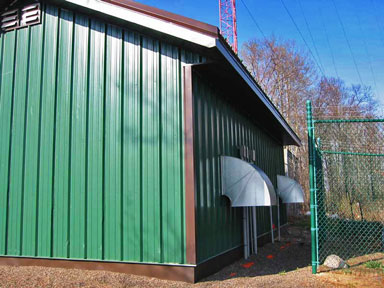 |
Here is the exterior of a larger transmitter building showing two incoming air vents on the right and two of four fan-driven exhaust air vents on the upper left. |
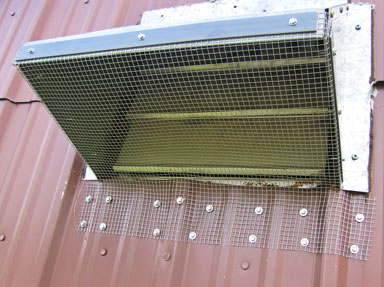 |
An example of a louvered fan with vent hood that has 1/4" hardware cloth over the outside to keep mice out. Not shown here is the silicone caulk that was used to fill small openings to also to keep mice out. Hardware cloth is available at better hardware stores and is easy to install. Use washers under the screws so the screw heads do not go through the 1/4" holes or use aluminum strips to hold it down. Hardware cloth usually comes galvanized to resist rust. |
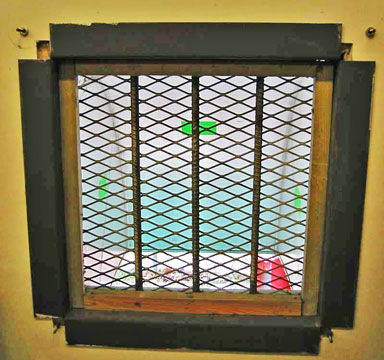 |
Because these openings are 24 inches
by 24 inches, there is a danger of thieves getting in. A
commercial welder was hired to create this metal frame with bars and
expanded metal mesh. Inside that, I added wooden 2 inch by 2 inch
stops that a 2" deep pleated air filter could fit up to.
|
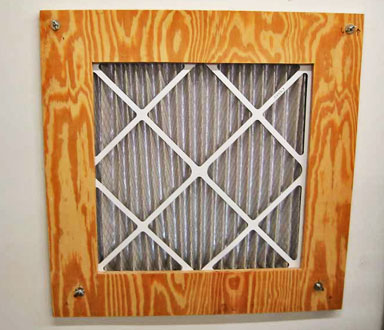 |
The finished product with an air
filter held in by plywood. The wood can be painted to prevent rot
if the transmitter is in a wet climate.
|
|
The stories go on and on.
Stop in again sometime. I'll leave the soldering iron on for you.
|
|
Questions? Email Mark Persons: teki@mwpersons.com |